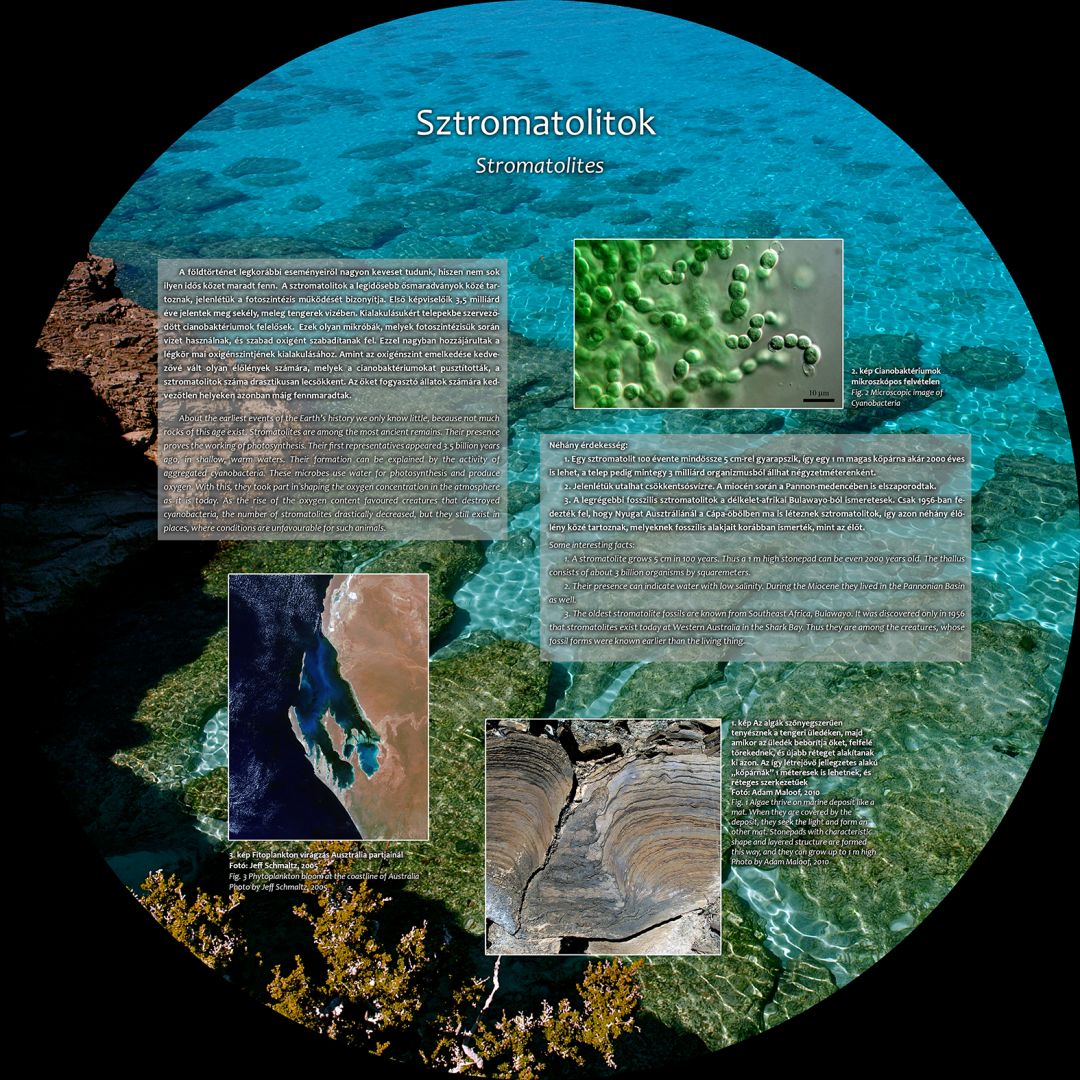GEOHISTORICAL GALERY - 2. view
Stromatolites
About the earliest events of the Earth’s history we only know little, because not much rocks of this age exist. Stromatolites are among the most ancient remains. Their presence proves the working of photosynthesis. Their first representatives appeared 3.5 billion years ago, in shallow, warm waters. Their formation can be explained by the activity of aggregated cyanobacteria. These microbes use water for photosynthesis and produce oxygen. With this, they took part in shaping the oxygen concentration in the atmosphere as it is today. As the rise of the oxygen content favoured creatures that destroyed cyanobacteria, the number of stromatolites drastically decreased, but they still exist in places, where conditions are unfavourable for such animals.
Some interesting facts:
1. A stromatolite grows 5 cm in 100 years. Thus a 1 m high stonepad can be even 2000 years old. The thallus consists of about 3 billion organisms by squaremeters.
2. Their presence can indicate water with low salinity. During the Miocene they lived in the Pannonian Basin as well.
3. The oldest stromatolite fossils are known from Southeast Africa, Bulawayo. It was discovered only in 1956 that stromatolites exist today at Western Australia in the Shark Bay. Thus they are among the creatures, whose fossil forms were known earlier than the living thing.
Fig. 1 Algae thrive on marine deposit like a mat. When they are covered by the deposit, they seek the light and form an other mat. Stonepads with characteristic shape and layered structure are formed this way, and they can grow up to 1 m high. Photo by Adam Maloof, 2010
Fig. 2 Microscopic image of Cyanobacteria
Fig. 3 Phytoplankton bloom at the coastline of Australia. Photo by Jeff Schmaltz, 2005
